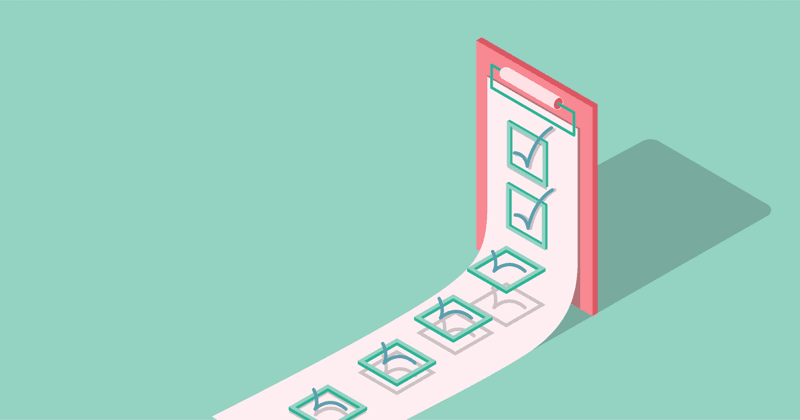Recently I had the opportunity to present at the SaaStr Annual in San Jose: a gathering of many different kinds of businesses selling software on a recurring basis.
Among the attendees, companies with a mobile-first philosophy were in the minority. This inspired me to talk about some of the lessons we learned while building and scaling Elevate.
These seven lessons give a high-level guide for delighting your customers, going to market, and building a successful mobile business.
Be personal
I think mobile is magical. As a form factor, it’s incredibly personal. It’s this tiny computer that is always in your hand or on your person, and is the most important device in our digital lives.
It doesn’t stop with physical proximity. Our phones have our communications, our photos, our calendars, our comings and goings, and countless other scraps of digital diary-making that weave a nearly complete picture of our lives.
Much of this information is available to us as developers: calendars, location, camera roll, etc. This can give your product a level of personalization that just isn’t achievable on any other platform.
Our phones have our communications, our photos, our calendars, our comings and goings, and countless other scraps of digital diary-making that weave a nearly complete picture of our lives.
Apps that leverage this data really get it right.
MileIQ is one of my favorite examples of a “serious” mobile subscription app that gets it right.

A simple mileage tracker, MileIQ helps people who drive for their work to keep track of their miles. That may not sound all that magical but the way they execute it is magical.
MileIQ asks for access to your location in the background, detects when you’ve made what looks like a drive, and prompts you with simple notification to classify it. Swipe left for pleasure, right for business. That’s it. You don’t have to think to use MileIQ. The more value you provide to the end user for less effort on their part, the stickier your app will be.
Be a service
Users entering a recurring revenue relationship with you will expect a certain level of service. An app that is just a calculator will have a hard time building a subscriber base: churn will be too high, it probably won’t be worth it. Users want and expect that you provide access to your service not just on their device, but everywhere your app lives: iPad, Android, web, etc.
Ubiquitous access may seem like an obvious feature if you’re coming from a web SaaS world where everything lives in the cloud by default, but on mobile it’s more flexible. Mobile apps don’t always need a backend. This can lead developers to cut corners and ship without it. If you’re going to ship a subscription app, invest in some form of login system. (Auth0 or Firebase are good services for doing this quickly).
Ubiquitous access may seem like an obvious feature if you’re coming from a web SaaS world where everything lives in the cloud by default, but on mobile it’s more flexible.
This complicates your onboarding but makes it much easier to provide the level of service that subscribing consumers expect.
Expect high churn
Compared to the B2B SaaS world, the average churn rate for mobile apps is much higher. It can be very dependent on the app itself: the more dependent your customer is on your app, the lower your churn be. On the low end churn will be 5%-10%, and on the high end it can be north of 30% every month!
Compared to the B2B SaaS world, the average churn rate for mobile apps is much higher.
Your churn generally has much more to do with what your app is than any sort of retention tricks you try (price, winback offers etc.). This is why being personal is so important. The stickiness of your app, the amount of value it provides passively will largely dictate your churn rate.
Whether your churn is 5% monthly or 25% monthly, it’s gonna be a lot. Even with 5% monthly churn, you’ll need to replace half of your paying subscribers every year, if it’s 25% churn, you’ll need to replace 97% of your users every year. That means you need distribution (we usually call them downloads in app land).
Leverage the platforms for distribution
High churn apps need distribution to survive, and distribution comes from the app stores. There are a few ways to boost your downloads: paid user acquisition, app store optimization, and getting featured.
Paid acquisition is something you can avoid in the early days if you build a great product. App store optimization (ASO) is important for getting featured and making sure users find your app organically and download it when they do. Every app needs to invest at least some in ASO. There are plenty of tips and tricks on ASO out there so I will leave it to the reader.
Read our extensive guide to app store optimization >>
What worked well for us at Elevate was getting Apple or Google to feature us in their store pages. It’s more an art than a science but there are levers you can pull. Well executed, getting featured can lead to millions of downloads.
Well executed, getting featured can lead to millions of downloads.
Before you can get featured, your app needs to be featurable. Apple and Google like to feature apps that make their platform look good: the App Store is more about them than it is about you.
Follow the HIG the best you can, use the device well, and obey the App Store Guidelines. Also, this sounds obvious, but make a good app! Apple has thousands of apps to choose from, if you want to help yourself get featured, you first have to make exceptional software.
The second important thing to get right is building your relationship with Apple. To get started, reach out to them via their promotions form. You will hopefully be contacted by the developer relations team and given someone you can communicate with about upcoming updates etc. They may also key you into upcoming promotion opportunities.
Apple has thousands to apps of choose from, if you want to help yourself get featured, you first have to make exceptional software.
The App Store editorial team are the ones who make the actual decisions, and they are wisely isolated from outside developers. The relations team will act as your liaisons.
Some tricks to boost your chance of getting featured include:
- Take advantage of new software and hardware features as soon as they launch (even if it’s not an obvious benefit for your app, if you can figure out a way to make it work, do it)
- A couple times a year, bundle a bunch of features into a new major release (i.e. 2.0, 3.0 etc). You can hype it up to Apple before it comes out.
- If they release a new gadget, build for it if you can (iPhone X, Apple Watch etc.)
Having done this for years at Elevate, I can tell you it’s not always the most fun. Apple becomes an extra member of your product team. But the insane amount of traffic you can get from a good feature make it worth playing their game. If you’re smart about it, you can also use it to keep your roadmap fresh.
Don’t fear the Apple tax
Apple can send you thousands of downloads at the push of a button. Amazing. All they ask in return is 30% of every dollar you make.
The Apple tax is a fact of life. They created the App Store, built the phone, provided the customers, gave away the developer platform, everything. And their reward is a total monopoly on distribution and there isn’t much we can do about it.
My advice is stop worrying and learn to love the tax. Now, there are real reasons for this. Processing payments through the App Store has one big advantage over other payment methods: it’s really slick. There is no other major platform in the world where your users are 1 click and a facial scan away from entering a recurring revenue relationship with you.
My advice is stop worrying and learn to love the tax.
Some developers may try to avoid the tax but I don’t think it’s worth it.
Apple doesn’t let you direct users from your app to any other place to purchase. Netflix recently removed the ability to purchase from their apps completely, just hoping that users will find their way to the website. They can get away with this because they are Netflix. Us less well known developers can run afoul of the app completeness rule. Also, we just don’t have the brand ubiquity that helps Netflix users “figure it out.”
Another “hack” is sneaking in a credit card payment flow. Not only does completely risk your relationship with Apple, the amount of friction it creates is painful.
Conversion funnels are touchy, especially if buyers aren’t super motivated. Whether you try to avoid the fee by just having no way to upgrade or you try to sneak in a credit card flow, you will easily introduce a 30% drop in conversion rate, canceling out any savings.
Let them pay everywhere
Just because you have to let them pay in app doesn’t mean your users can’t pay online too (or on their Android device for that matter). Customers don’t know what it takes to glue together a subscription system. They aren’t as forgiving if you try to explain the nuances of reconciling a web-based, Android, and iOS payment systems. Or how hard it is to test in-app subscriptions.
If you have a presence on all of these platforms, let them pay on all of these platforms. In fact, RevenueCat can help you with that and make in-app subscriptions easy so you can focus on building a great product.

